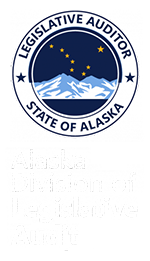| Finding Number | Finding |
|---|---|
| 2.3.3 | Per capita behavioral health spending in Alaska is among the highest of any state. Although expenditures per capita continue to rise annually, expenditures per recipient have actually decreased over the period. |
| 5.1.3 | Suspending Medicaid eligibility policy for inmates in corrections is more cost effective than terminating eligibility entirely and reduces the risk of recidivism by facilitating continued access to behavioral health services for citizens returning to the community post-incarceration. |
| 6.2.2 | The Department’s reported administrative costs for behavioral health services are lower than national averages for state mental health authorities. |
| 7.2.6 | The list of reductions presented by the Department is consistent with opportunities for potential cost savings and cost avoidance identified in the review. |
| 8.2.5 | The information technology used by the Department can identify the extent to which recipients are receiving multiple benefits and whether recipients are Medicaid eligible. MMIS programs routinely contain edits that eliminate the payment of duplicate benefits and restrict payments for only those dates of service that the recipient was Medicaid eligible. However, lack of interoperability among the Department’s multiple information systems impedes its ability to track which recipients receive multiple benefits for non-Medicaid services. |
| 8.2.6 | The Master Client Index is so far unsuccessful at allowing DHSS to track and report efficiently on recipients who receive multiple benefits. |
| 8.4.1 | Annual maintenance costs for AKAIMS are within national standards. |
| 9.1.4 | The Department has significant room for improvement in minimizing administrative costs of grants and contracts, as limits or benchmarks have not been established to monitor administrative costs. |
| 10.1.1 | The Department continues to be a national leader in its cost collaboration with tribal health systems through the Medicaid program. |
| 10.1.2 | As an early adopter of Medicaid outreach and enrollment initiatives among tribal providers and recipients, the Department operates a mature partnership that already takes advantage of most readily available opportunities for cost collaboration with the tribal system. |
| 10.1.6 | In 2012, the Alaska Veterans Affairs Healthcare System (AVAHS) established sharing agreements with 26 tribal providers, which increased enrollment in veterans’ programs, reduced VA system costs, and infused new funding sources into the tribal health system. Although the Department is not a party to these agreements, the expansion of VA-reimbursable options reduces dependency on state-funded direct care provided by tribal providers |
| 10.1.7 | Recent changes in the Veterans Health Administration’s authority to procure non-VA behavioral health services increase the overlap between VA and State systems, creating additional opportunities for cost collaboration. |
| 10.3.1 | Based on current Division spending for acute and sub-acute behavioral health services, it is estimated that the Department could save at least $2 million if a tribal provider established an inpatient psychiatric unit. |
| 13.1.1 | Alaska Medicaid fraud recovery, while currently less than one percent of total Medicaid expenditures, has significantly improved in recent years as a result of additional dedicated resources and a corresponding increase in recoveries and convictions. |
| 13.1.3 | The Division of Public Assistance Fraud Control Unit is the departmental unit with primary responsibility for identifying and reducing recipient fraud, waste, and misuse. It has established an effective array of preventive and investigative strategies to generate substantial cost avoidance and direct savings to the Department. |
| 13.1.5 | State audits of Medicaid providers conducted on behalf of the Department's Audit Committee have proven effective, identifying $5 million in overpayments since October 2012. |
| 13.3.1 | Based on CMS estimates of improper payment within Medicaid programs nationwide, PCG projects that the State could generate another $5-10 million in combined cost savings and avoidance through improved Medicaid program integrity efforts. |
| 13.3.2 | Assuming the rate of improper payment for behavioral health services is similar to the level of estimated improper payment in the Medicaid program as a whole, then improved program integrity activities could generate approximately $1 million in additional combined cost savings and avoidance for behavioral health services. |

